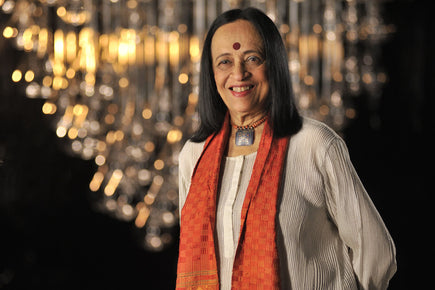The Right Buddha for Your Home
How often have you walked into someone’s home and spotted a beautiful Buddha statue or painting? In fact, many of us already have a Buddha, in some form, in our own homes. But not all of us have dug deep into the hidden meaning of Buddha’s different postures and positions.
At a glance, most Buddha depictions seem alike – a robe covering one shoulder to show his simple way of living, a bindu on his forehead that symbolizes the meditative third eye, and long ear lobes and top knotted hair to show he was once a Prince.
(Brass Buddha Statue Depicting All His Princely Features)
But the similarities usually end here, with Buddha statues having been illustrated in over 100 different poses. Each pose combines an asana (position), and a mudra (hand and finger gestures), which depicts the attributes and the mood of the deity. Although there are many types of mudras, six basic types are the most illustrated. Combined with the asanas, they represent the various life stages of Buddha on his journey to attaining nirvana.
Not just this, the different mudras also play a big role in helping you decide which part of the house to place a Buddha in.

Dhyana Mudra
The Meditative or Serenity Buddha is in a state of Dhyana or meditation, before attaining enlightenment. He is seated with legs crossed in the lotus position, palms facing upward, and the right hand resting on the left with thumbs touching. Practitioners of Buddhism use this pose to meditate and focus on non-attachment.
Artisera Décor Tip: Perfect for the study or a meditation room

(Dhyana Mudra, Kamakura, Japan)
Bhumisparsha Mudra
This mudra symbolizes the moment of Buddha’s enlightenment. In this pose, his legs are crossed, left hand faces upwards raised above the lap, and the right hand points to the ground touching (sparsha) the earth (bhumi), as witness to the moment of enlightenment.
Artisera Décor Tip: Best for the entrance, foyer or a long passageway

(Bhumisparsha Mudra, Kande Viharaya, Aluthgama, Sri Lanka)
Dharmachakra Mudra
Here, Buddha’s fingers form a circle with the thumb and forefinger using both hands, and they are held close at the chest level touching each other. The fingers are symbolic of Buddha turning the Dharmachakra (wheel of righteousness), and imparting knowledge to his disciples after attaining enlightenment.
Artisera Décor Tip: Place it in your living room or home office

(Dharmachakra Mudra, Dambulla, Sri Lanka)
Vitarka mudra
While most Buddhas are shown in a sitting position, one in the Virtaka mudra can be in a walking or standing position, as he is helping others attain enlightenment. The right or left hand points skywards, with the thumb and forefinger touching as a symbol of peace. The other hand faces downward to symbolize bestowal and explanation of dharma.
Artisera Décor Tip: Would fit in well in your library/study or home office

(Vitarka mudra, Sukothai, Thailand)
Abhaya mudra
The Abhaya mudra is a symbol of protection and also a gesture of fearlessness. Here, Buddha’s right hand faces upwards with all fingers extended. This mudra is often depicted along with another mudra using the left hand.
Artisera Décor Tip: Ideal for the main entrance of your home or the living room
Varada mudra
In this mudra the left hand faces downwards to show compassion or granting of a boon. This mudra is used along with the Abhaya mudra and is often seen on a standing Buddha.
Artisera Décor Tip: Fits well in a meditation room, or a quiet corner of the house

(Abhaya and Varada Mudra)
Reclining Buddha
Most statutes and illustrations of Buddha show him in sitting or standing asanas with his fingers shaped into a mudra. However, the Nirvana Buddha shows the Buddha in a reclining position, resting his head against the right palm. This depicts the last moments of Buddha before attaining nirvana and escaping samsara or rebirth.

(Reclining Buddha, Wat Pho, Thailand)
Buddhas seen across the world today are replicas of statues enshrined in various temples, or are reproductions of famous statues commissioned by patrons. As Buddhism spread across the world from India to other places, the statues started taking on local characteristics. Ultimately, irrespective of the variations in depiction, the Buddha is always seen and perceived as a symbol of calmness, and unarguably adds distinct character to the home.
Explore a collection of Buddha sculptures on Artisera.

























































































